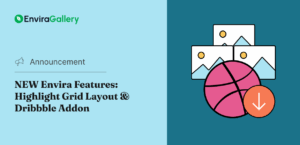- Login
-
Get Envira
With over 3,000,000+ downloads, Envira is the perfect solution for YOU.Get Envira Gallery Now
Video Galleries
Audio Support
Image Downloads
Fullscreen Images
Image Proofing
Albums
ZIP File Import
Gallery Defaults
WooCommerce
Photo Proofing









